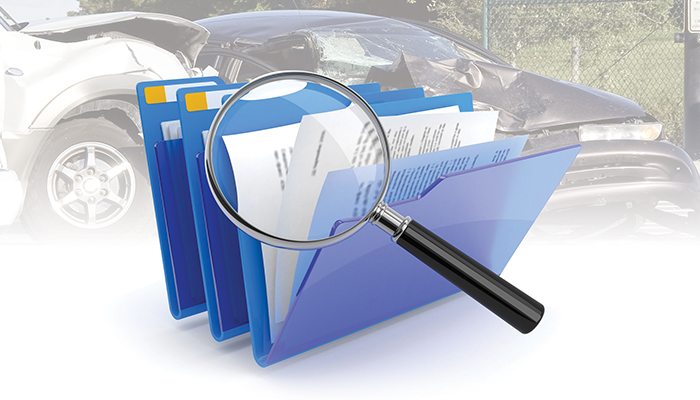All
NTSB Investigating Recent Tesla Crashes
by Ed Burke, Dennis K. Burke Inc.

For the second time in recent months, a Tesla accident has drawn the attention of the National Transportation Safety Board (NTSB). On May 9, the agency announced it was sending a team to investigate a fatal electric vehicle crash that had occurred in Fort Lauderdale, Florida.
In April, a Tesla Model S was reportedly traveling at a high rate of speed when it struck a wall, resulting in a post-crash fire. The fire reportedly prevented people from helping the victims. Two vehicle occupants died and one was injured.
The vehicle’s speed is believed to be a factor in the accident. At this time, the NTSB does not anticipate Autopilot being a part of this investigation. This investigation is focused on the post-crash fire, specifically how first responders can best extinguish fires in electric vehicles and then transport the lithium-ion battery.
“NTSB has a long history of investigating emerging transportation technologies, such as lithium-ion battery fires in commercial aviation, fires involving the lithium-ion battery in a Chevrolet Volt, and a fire involving the transportation of hydrogen gas for fuel cell vehicles,” said NTSB Chairman Robert S. Sumwalt. “The goal of these investigations is to understand the impact of these emerging technologies when they are part of a transportation accident.”
As with all NTSB investigations, the agency will use the party system as part of its investigative process, offering party status to those organizations that can provide technical assistance related to the crash. The NTSB intends to offer party status to local first responder agencies, involved law enforcement agencies and to Tesla for this investigation. Once an organization agrees to become a party, the system provides continued sharing of investigative information (including safety-critical information) during the early fact-gathering phase of an investigation. This sharing ensures that each party to an investigation has sufficient information to take any immediate actions necessary to ensure safety.
NTSB said investigations that involve fatalities tend to take 12 to 24 months to complete.
A Tesla statement said, “Our thoughts are with the families and friends affected by this tragedy. We are working to establish the facts of the incident and offer our full cooperation to the local authorities. We have not yet been able to retrieve the logs from the vehicle, but everything we have seen thus far indicates a very high-speed collision and that Autopilot was not engaged.”
The NTSB is still investigating the March crash of a Tesla in Mountain View, California, which caused the driver’s death. That vehicle was in Autopilot mode when it hit a concrete barrier. The agency sent investigators to look into the fatal crash and fire, involving a Tesla Model X SUV. Investigators are studying a fire that broke out after the crash and took hours to put out, according to reports.
Once ablaze, lithium-ion batteries (the same kind found in laptops and cellphones) have a tendency to ignite in a chain reaction and burn considerably hotter than the lead-acid batteries used in gas-powered cars.
After the March accident, Tesla helped NTSB retrieve and interpret data from the vehicle’s logs, but the manufacturer and the agency found each other at odds over the company’s decision to disclose information about the crash on its website.
In April, Tesla released information suggesting a driver in a recent crash was at fault, citing data from the vehicle indicating his hands were not on the wheel prior to the crash. Even when the vehicle is in Autopilot, Tesla drivers are reminded by the vehicle to keep their hands on the wheel. Tesla said the driver ignored repeated warnings from the vehicle to take back control of the car.
NTSB said the release of such information was premature and removed Tesla as a party in its investigation. Tesla said it chose to withdraw in order to defend its position. Either way, Tesla is no longer a party to that NTSB investigation, although it said it would continue to assist the agency.
Tesla is also pushing back against any notion that its batteries are unsafe. The company website posted that the batteries in its vehicles are designed such that in the rare circumstance a fire occurs, it spreads slowly so occupants have plenty of time to get out of the car.
In a May Tesla accident, a 28-year-old driver, who slammed her Model S into the back of a fire department truck in South Jordan, Utah, said that the vehicle’s Autopilot feature had been engaged at the time of the crash, according to police.
The South Jordan Police Department says the Tesla hit a fire department mechanic truck stopped at a red light. The car was demolished, but fortunately, there were only minor injuries. Police say the Tesla’s driver sustained a broken right ankle and the truck driver suffered from injuries related to whiplash.
While the Tesla Autopilot feature indicates that a driver must be attentive at all times, in this case, the driver told authorities that she had been looking at her phone and cruising at a speed of 60 mph just before the crash.
Would we all be safer if Tesla could remotely disable the Autopilot feature or reduce the speed in cars that routinely or excessively ignore the car’s prompts and warnings?
Related Posts
 U.S. Competing to Secure Critical Minerals
U.S. Competing to Secure Critical Minerals
Posted on June 16, 2025
 The Clean Air Act, the EPA, and State Regulations
The Clean Air Act, the EPA, and State Regulations
Posted on May 14, 2025
 Day Tanks Support Back-up Generators in Extreme Conditions
Day Tanks Support Back-up Generators in Extreme Conditions
Posted on March 10, 2025
 Major Breakthrough in Lithium-Ion Batteries
Major Breakthrough in Lithium-Ion Batteries
Posted on February 12, 2025
Enter your email to receive important news and article updates.
